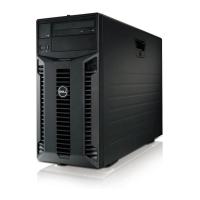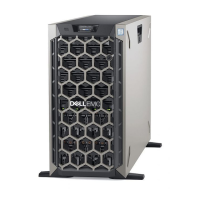Dell
PowerEdge T410 Technical Guide 23
5.7 Acoustics
The acoustical design of the PowerEdge T410 reflects adherence to Dell’s high sound quality
standards. Sound quality is different from sound power level and sound pressure level in that it
describes how humans respond to annoyances in sound, like whistles or hums. One of the sound
quality metrics in the Dell specification is prominence ratio of a tone as shown in Table 7.
Acoustical Performance Table 7.
Typical Configuration @ 23 ± 2°C
4 x 3.5‖ SATA
(7.2K) 250GB
Definitions
Idle: Reference ISO7779 (1999) definition 3.1.7; system is running in its OS but no other specific
activity.
Stressed: An operating mode per ISO7779 (1999) definition 3.1.6; SPECPower set to 50% loading is
used.
LwA–UL: The upper limit sound power level (LwA) calculated per section 4.4.2 of ISO 9296 (1988) and
measured in accordance to ISO7779 (1999).
LpA-Op: A-Weighted sound pressure level. The system is placed in center of ISO7779 table, while the
acoustic transducer is located 150 cm above the floor and 50 cm in front of the equipment.
Prominent tones: Criteria of D.6 and D.11 of ECMA-74 11th ed. (2010) are followed to determine if
discrete tones are prominent. The system is placed in a rack with its bottom at 75-cm from the floor.
The acoustic transducer is at front bystander position, ref ISO7779 3rd (2010), Section 8.6.2.

